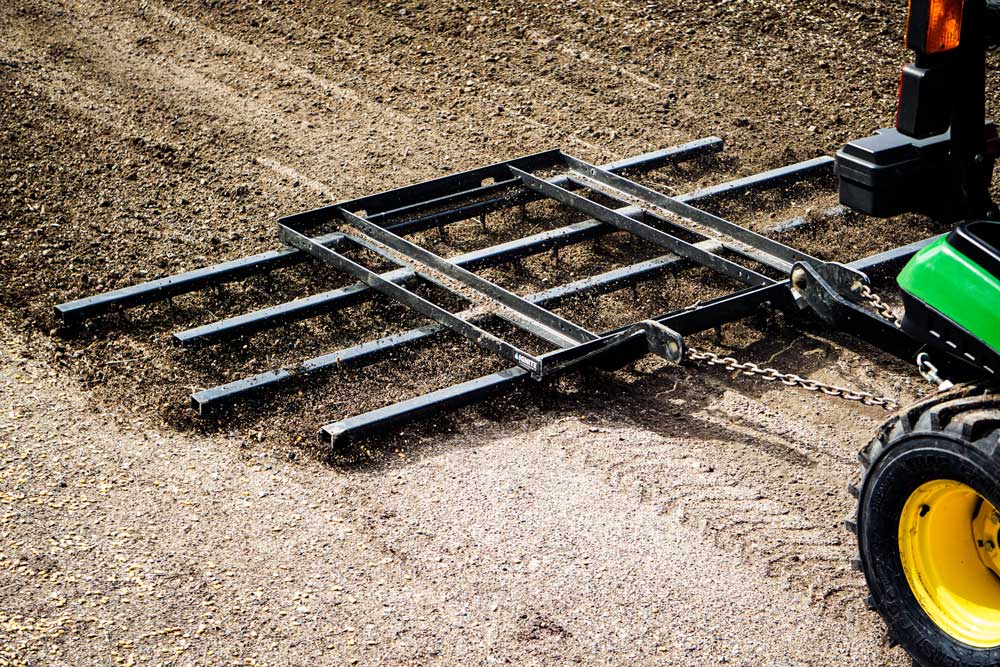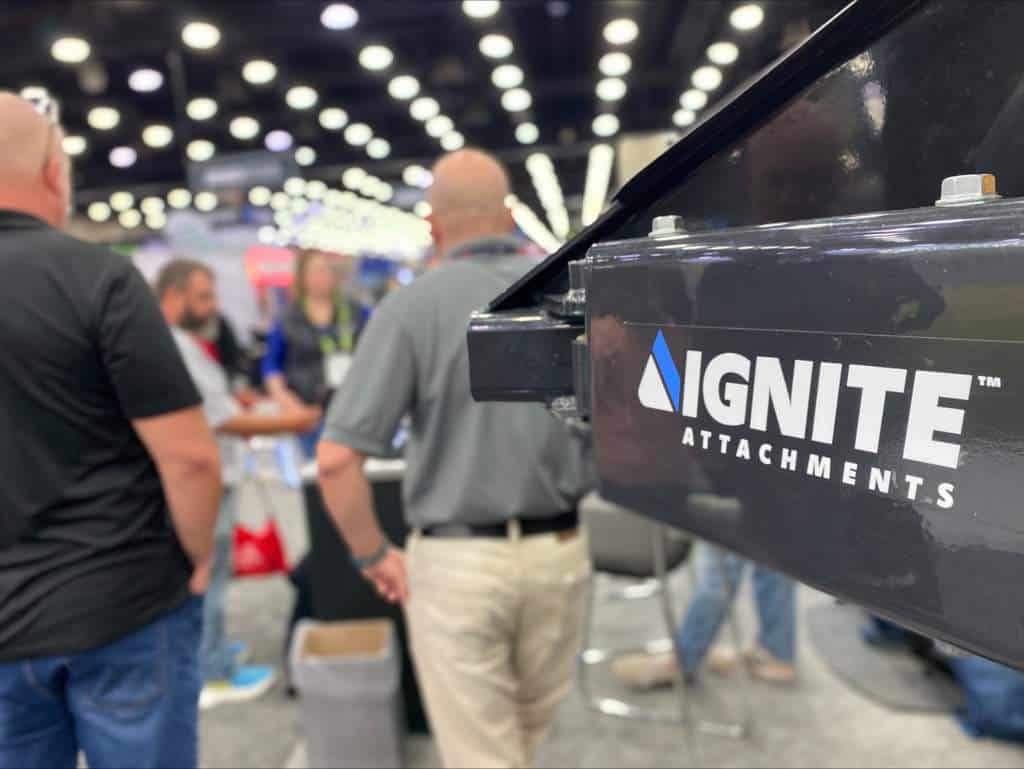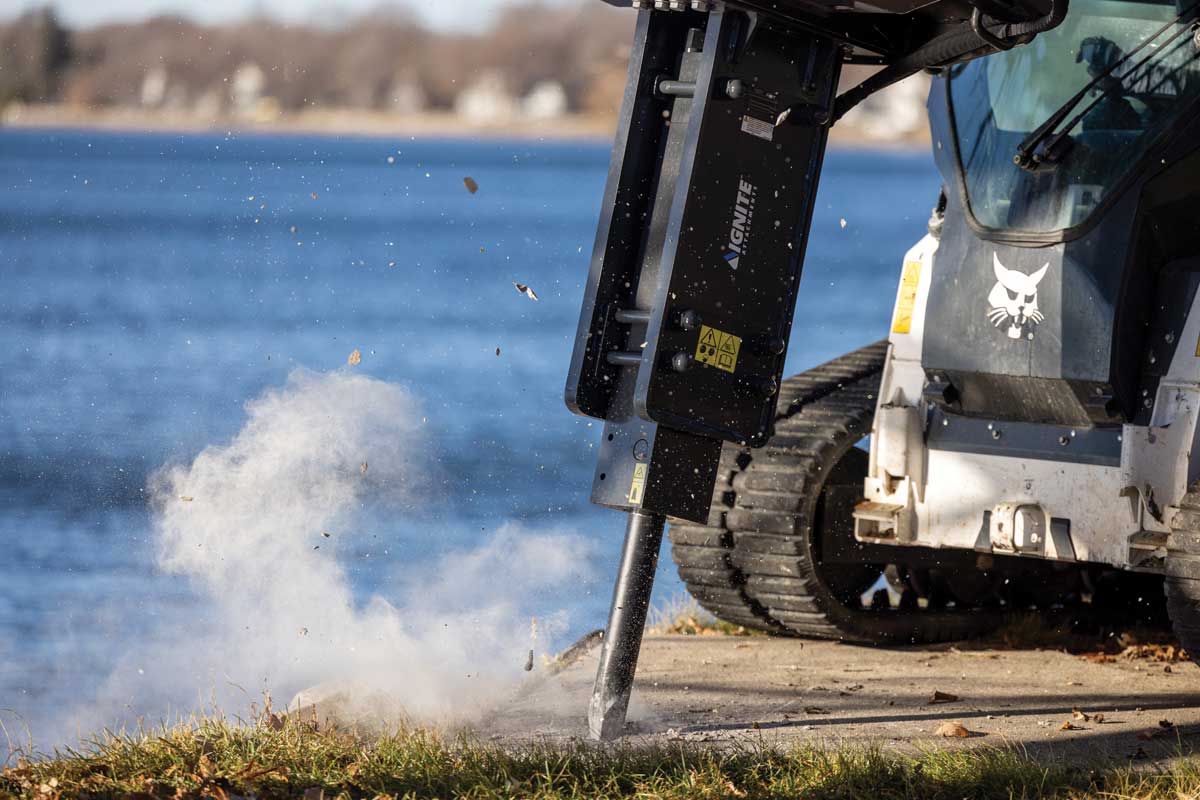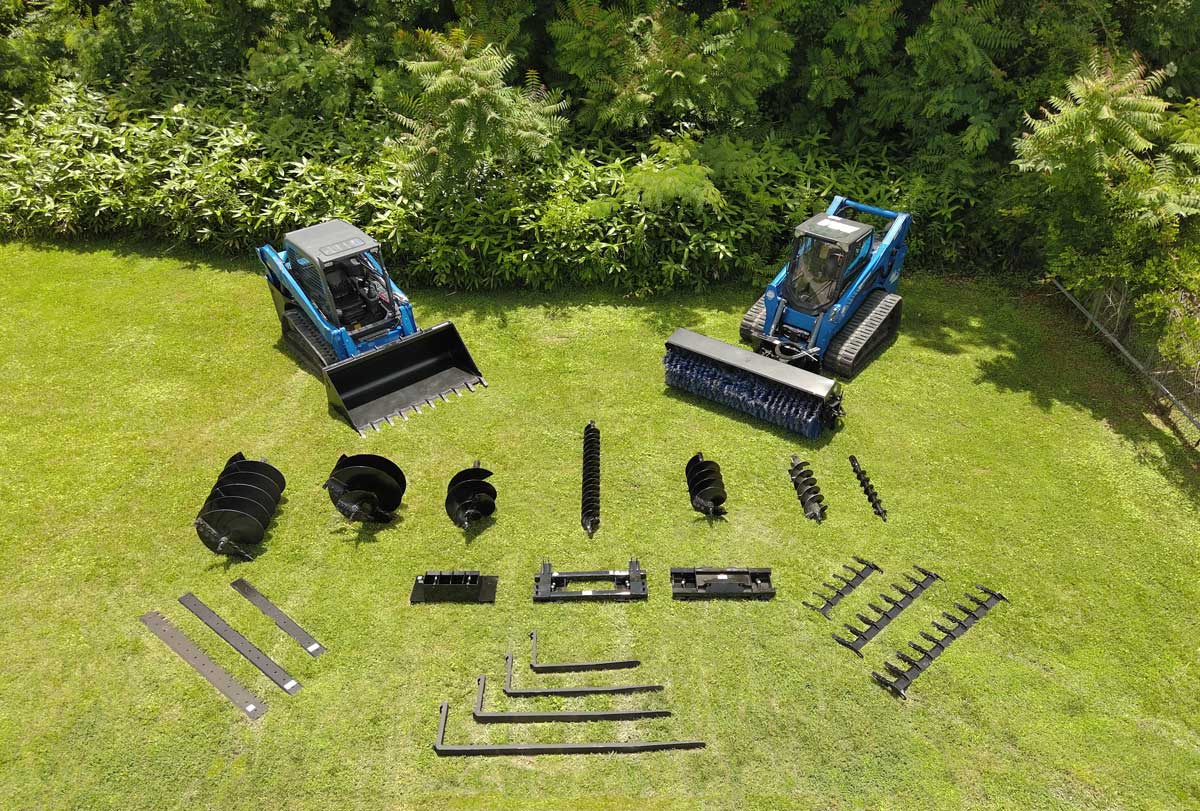Hammer Time! How to Match and Use a Breaker Attachment with a Mini Excavator

Getting ready to tear out some pavement with your mini excavator? Maybe smash up some large boulders that are in the way of your landscaping project? Then you probably need a hydraulic breaker attachment, also known as a hammer. Typically used for demolition and excavation when paired with compact equipment, hammers can pulverize rocks and concrete efficiently and effectively. While it’s possible to “blast” these materials with explosives, using a hammer attachment is far better if the job requires more precision or you’re working in a smaller, more sensitive area.
Hammer attachments are often used on skid steers, compact track loaders and mini or compact excavators. They work particularly well with compact excavators, however, due to the machine’s ability to work in areas with limited access. Also, with an excavator, contractors can quickly switch from the hammer attachment back to the thumb and bucket when it’s time to remove the materials they just demolished, adding to overall efficiency and productivity on the jobsite.
“After the traditional thumb-and-bucket combination, hammers are possibly the most popular attachments for mini and compact excavators,” says Lee Padgett, product manager for Takeuchi-US. “In fact, we just introduced a new line of sound-suppressed hydraulic hammers because they are such an essential tool on many jobsites. They’re great for outside demo, residential concrete work and road construction. Depending on the types of jobs a contractor needs to accomplish, a hammer can really increase an excavator’s versatility and ROI when used correctly.”
Some contractors may only occasionally need to use a hammer attachment, and that’s why they’re also very popular in the rental market. Store owners can expect to see hammer attachments rented out quite frequently by those individuals or companies that can’t justify purchasing one of their own.
“Regardless of whether you’re renting a hammer or purchasing one, it’s important to match it to your excavator and its capabilities,” Padgett says. “First, make sure that the hammer’s weight is within the machine’s working range. Second, you’ll need to have the proper hydraulic flow and pressure to fire the hammer. Finally, you need a hammer that’s the correct size for the material you need to demo.
“While it’s not a must, you may also want to have a coupler and a bucket on hand so you can quickly switch to the bucket when it’s time to remove debris from the jobsite.”
Padgett goes on to explain that using a breaker that’s too big or too small for your excavator can seriously decrease your overall productivity. In either scenario, the machine can’t provide the optimal breaking pressure required for top performance.
“You need to match the hammer to the excavator’s hydraulic capabilities. If you have too much flow and pressure, it could damage the seals in the hammer. Conversely, if you don’t have enough flow and pressure, the hammer is not going to have enough force or will fire slowly.”

Another consideration is the method by which the hammer is fired. Traditionally, hydraulic hammers are fired by nitrogen gas. When the hammer’s supply hoses jump or jerk around excessively, it’s a sign that the nitrogen chamber needs to be recharged. This situation is what makes the hammer lose impact pressure and may cause the supply hoses and their connections to loosen and leak. However, some hammers available on the market today are now oil-fired instead of nitrogen-fired, including those from Takeuchi’s new lineup.
“Our new oil-fired, sound-suppressed hammers feature a membrane-style accumulator which is designed to prevent leaks as well as the need to recharge, leading to lower operating costs,” Padgett says. “It also means that our hammers maintain the same amount of force over time for more consistent operation and performance.”
It’s no secret that while in use, hammers can be very loud, largely because of the type of work they’re intended to perform. However, newer hammer technology is making these attachments less disruptive, with fewer vibrations and lower noise levels. This protects the operator and the carrier unit as well as the environment, extending the hammer’s range of applications on constricted jobsites and wherever noise protection is required.
“Some hammers, like the sound-suppressed models we recently introduced, feature more insulation, which in turn generates less noise and vibration,” Padgett says. “There’s also the added bonus that more insulation also provides the hammer with greater protection from dust and debris, leading to longer attachment life.”
Hammers are obviously very powerful devices that can either do exactly what they’re intended to do … or a lot of damage, depending on how you approach the task at hand. Fortunately, these attachments are easy to use with not much training required. Padgett offers up this step-by-step orientation process, but he also recommends referring to the operator’s manual for a detailed list of instructions before operation:
- Know where the daily grease points are and maintain appropriately.
- Inspect the work tool to ensure it’s in good condition.
- Set the proper operating pressure and flow requirements for the hammer.
- Learn how to apply down pressure to avoid “dry firing” the hammer.
- Understand how long to fire the hammer before stopping to let it cool.
“While the learning curve isn’t steep when using or maintaining a hammer, there are a few points that are particularly important,” Padgett adds. “Hammers will need to be greased daily at a minimum — sometimes twice a day depending on how long and how often they’re used. At certain times, the hammer’s seals will need to be replaced.
“The bottom line is that hammers are a relatively simple, yet productive attachment for mini excavators as well as other compact machines. As long as you match your hammer to your carrier unit and follow your manufacturer’s instructions, you’ll be able to accomplish demo and excavating tasks quickly and efficiently.”
Breaker Bits
Body Styles
Body style can vary between models and manufacturers, but two of the main differentiators are box-style or solid-body encasements. Box-style breakers have, you guessed it, a squared body that is meant to protect the internal percussion mechanism. These breakers are fairly versatile and can come with a high power-to-weight ratio. Solid-body breakers have an integrated percussion mechanism inside a single cast iron body. This design creates a slimmer profile that provides more maneuverability and is ideal for working in narrow trenches or workspaces with limited access.
Impact Power
Once a dealer or manufacturer matches a breaker’s size to the carrier, contractors should know what kind of impact power they are getting, which manufacturers typically measure in one of two ways: a calculated foot-pound (ft-lb) class or an AEM rating. When comparing breaker power, we suggest looking at the AEM ratings in addition to the ft-lb rating. AEM has this cool Tool Energy Rating PDF you can download for free at shop.aem.org.
Lynette Von Minden is a public relations manager at Swanson Russell.




